Warning: pic heavy, as usual.
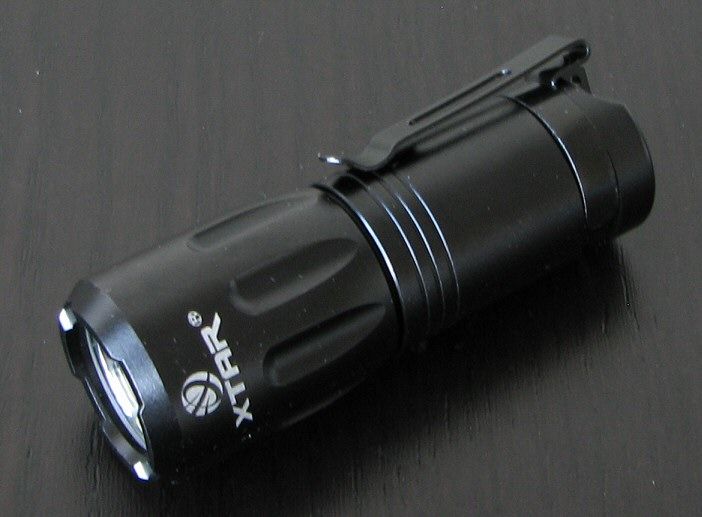
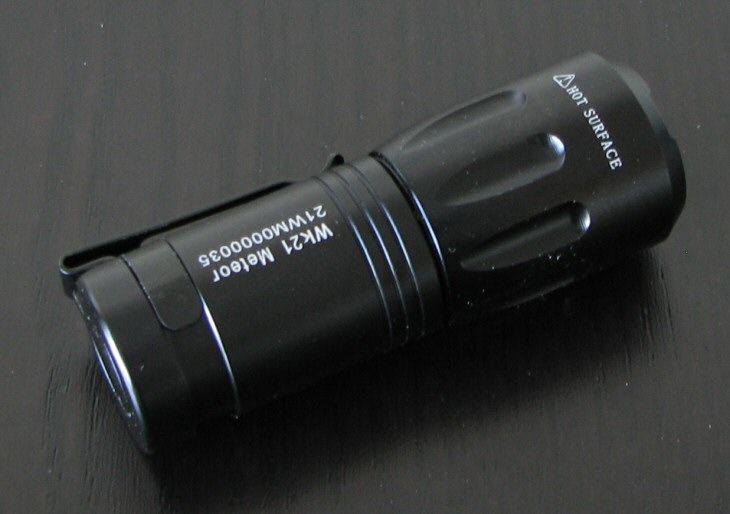
The WK21 is keychain 1xRCR class light from Xtar, featuring a high-output XM-L emitter. Scroll down to see how it performs relative to others in this class.
Manufacturer's Specifications:
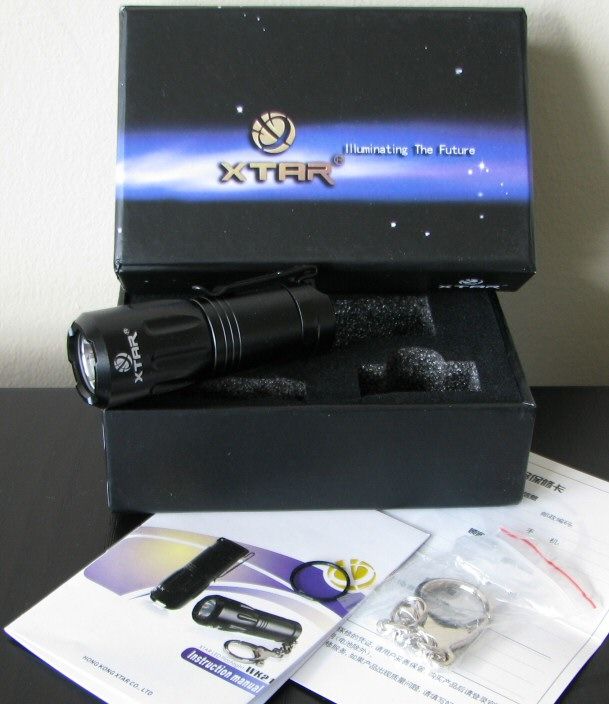
Packaging is a hard cardboard box with built-in packaging foam. Inside you will find the light, belt clip (attached), keychain ring, extra o-ring, manual and warranty card.
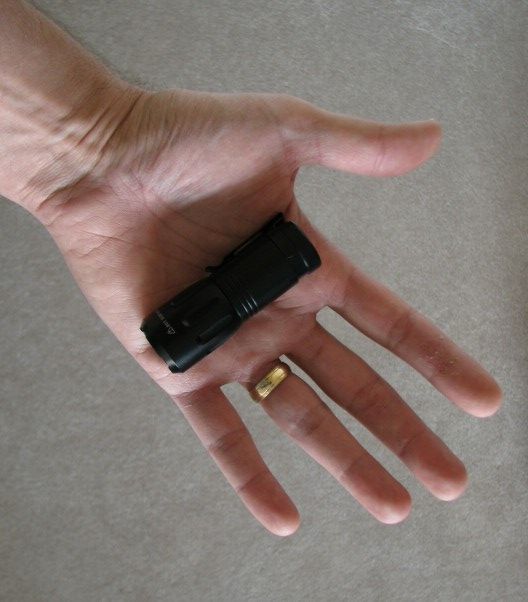
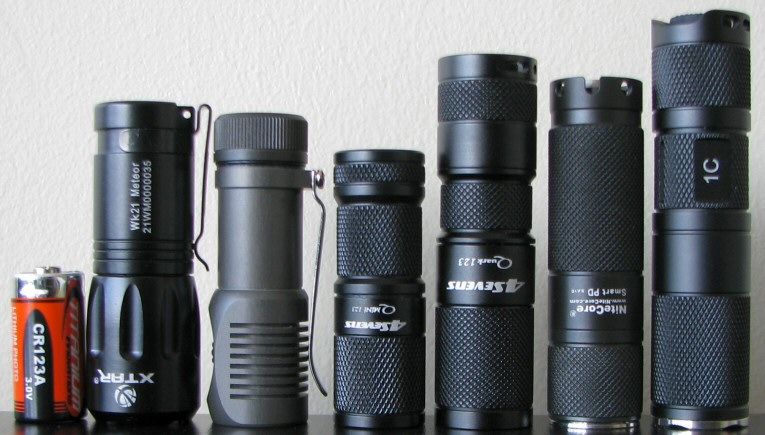
From left to right: CR123A, Xtar WK21, Zebralight SC30, 4Sevens Mini 123, 4Sevens Quark 123, Nitecore PD10, Thrunite Neutron 1C.
All dimensions are given with no batteries installed:
Xtar WK21: Weight: 59.1g, Length: 66.5mm, Width (bezel): 25.8mm
Lumintop ED10: Weight: 21.5g, Length: 70.4mm, Width (bezel): 20.7mm
Olight i1 Stainless Steel: Weight 48.1g, Length: 63.9mm, Width (bezel): 20.4mm
Jetbeam BC10: Weight: 46.6g, Length: 90.3mm, Width (bezel): 23.2mm
Thrunite 1C: Weight: 45.2g, Length: 91.5mm, Width (bezel) 22.0mm
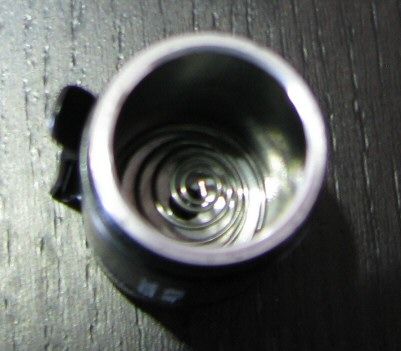
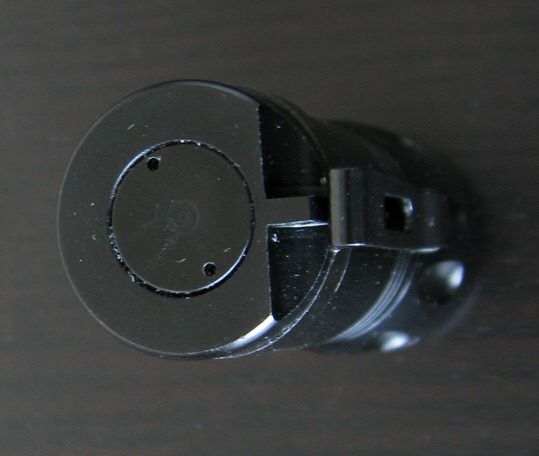
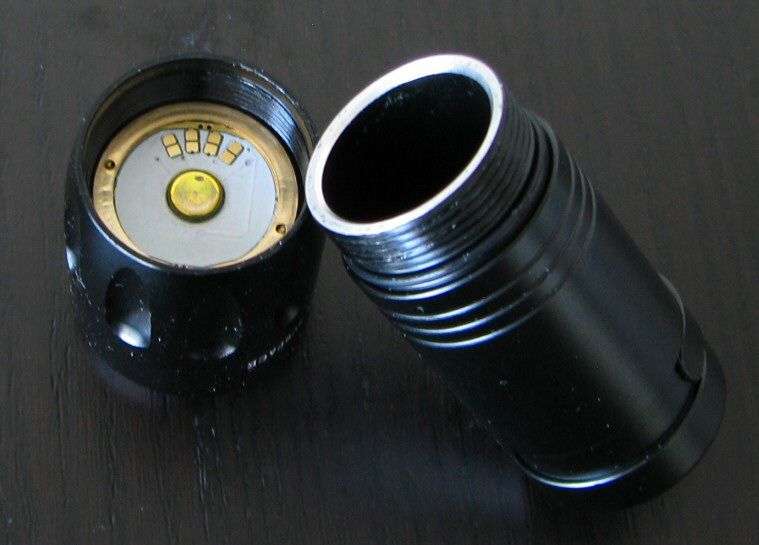
Overall build is fairly sturdy – light feels very solid. There is good weight to the head, making me think heatsinking is decent.
Anodizing is a shiny black, and seems thick, without any nicks or damage on my sample. There is no real knurling on the head or body, but there are some fluted ridges on the head to help with grip. With the removable clip attached, overall grip is certainly decent. Labels are bright white against the black background.
Light has a scalloped bezel ring, letting you know if the light is on when standing on its head. The light can tailstand.
Of interest, there is a strong magnet on the base of the light, allowing you to stick this light to metal surfaces. Of course, that also means that it is likely to attract coins in your pocket, if you leave it on a keychain.
There is a metal spring at the base of the light.
Light works by tightening the head against the body, so screw threads are anodized for lock-out. Threads have more play in them than typical – certainly more than I would like (i.e. very "sloppy", or loose).
User Interface
To activate the light, tighten the head against the body.
The WK21 is a fully customizable light, with anywhere from one to up to five possible modes (arranged in sequence, accessed by a loosen-tighten cycle from On). The five output modes are Lo, Med, Hi, Strobe and SOS (generally in that sequence). But there are 16 possible mode combinations available to choose from.
You set the mode combination through the four pairs of contacts on the inside of the head (note that 2^4 = 16 combinations). By default, all four contacts pairs are disconnected. This gives you the five output modes listed above. You can connect individual paired contacts to give you access to other mode combinations. Normally, you would do this by soldering the contact points between the pairs (but sometimes the old graphite trick with a pencil works to give you temporary connectivity).
There is a table in the manual that explains what each of the mode options are. For example, if you connect the fourth contact only, you get Lo > Hi > Strobe > SOS. If you connect the last three pairs of contacts, you get Hi > Strobe only, and so on and so forth. Please refer to the manual for all the specific pairings.
There is mode memory, and the light remembers the last setting you left it (if you leave it off for at least several seconds).
I've noticed the light can be inconsistent in how it cycles through modes (i.e. it sometimes acts as if some of the contacts have been connected, giving you a reduced number of modes). Keeping all contacts surfaces clean helps, but consistency is still not 100% in my testing.
For a more detailed examination of the build and user interface, please see my video overview: :wave:
Video was recorded in 720p, but YouTube defaults to 360p. Once the video is running, you can click on the 360p icon in the lower right-hand corner, and select the higher 480p to 720p options, or even run full-screen.
PWM/Strobe
Med mode:
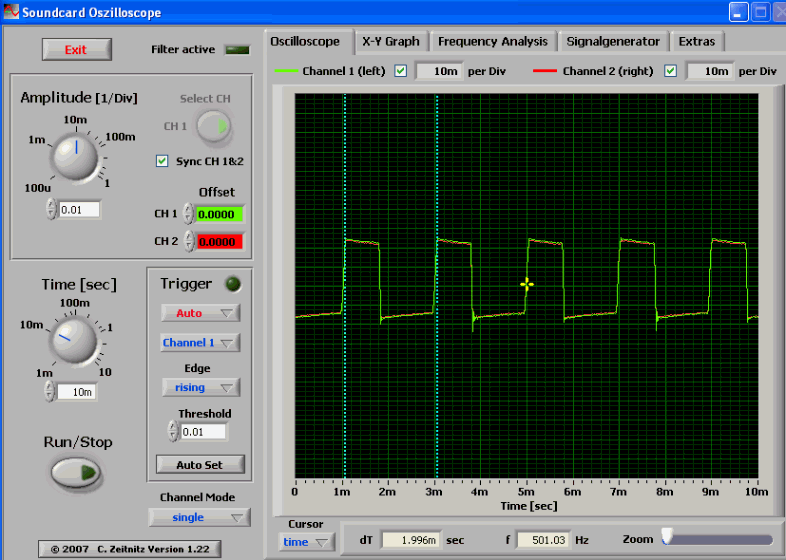
Lo mode:
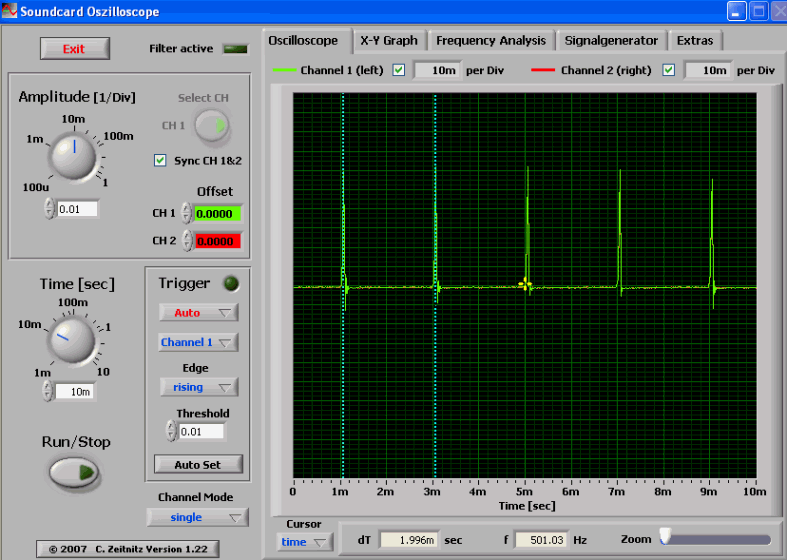
The WK21 uses PWM of 500 Hz frequency. This is high enough to not be issue in actual use for most people, but it is detectable.
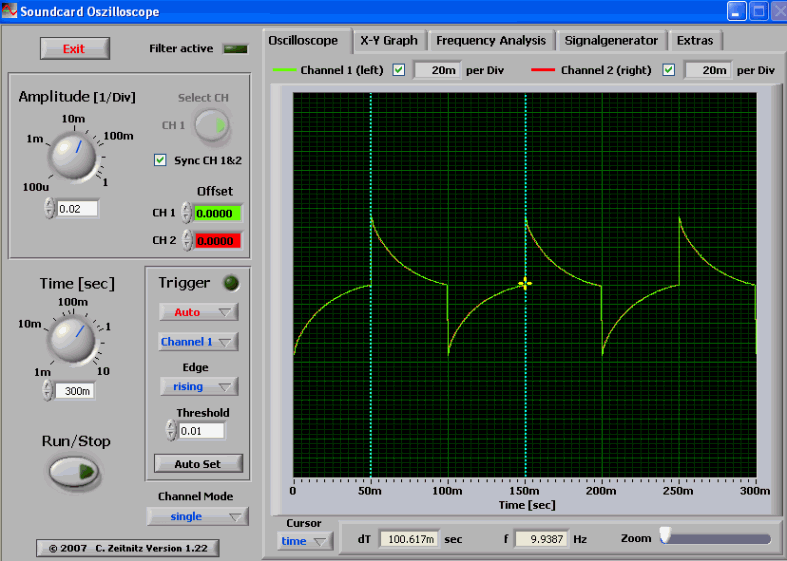
Strobe was measured at 10 Hz.
Beamshots:
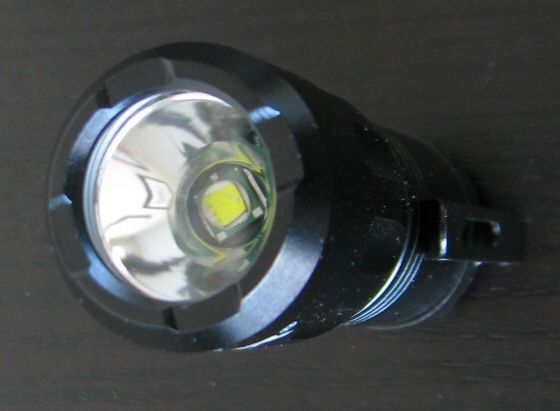
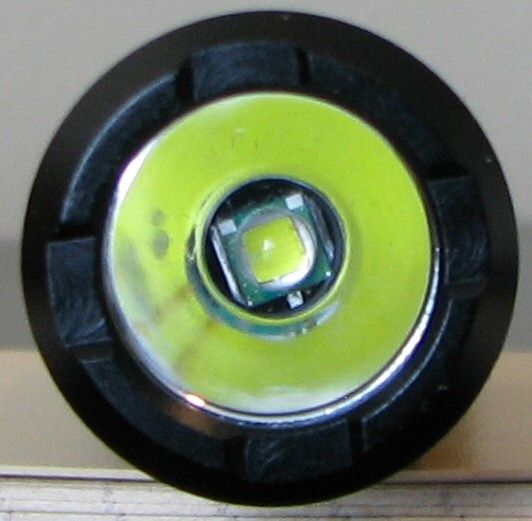
The WK21 uses a Cool White XM-L emitter, reasonably well-centered in a smooth reflector. Given the small size of the head, I would not expect great throw.
All lights are on AW protected RCR, about ~0.75 meter from a white wall (with the camera ~1.25 meters back from the wall). Automatic white balance on the camera, to minimize tint differences.
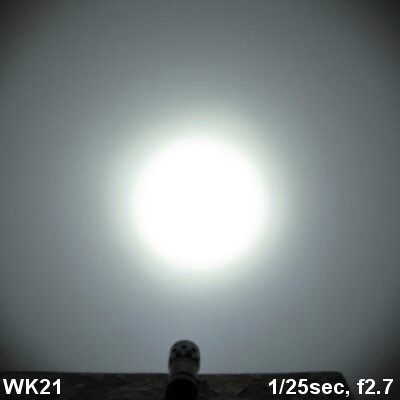
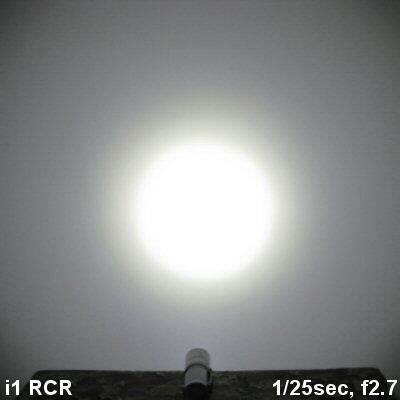
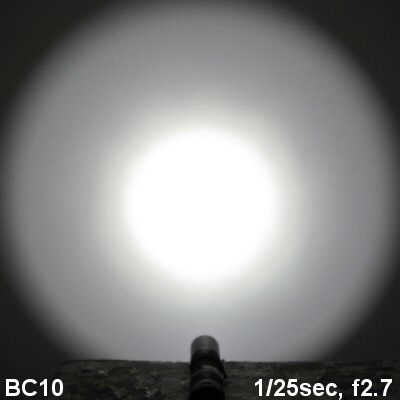
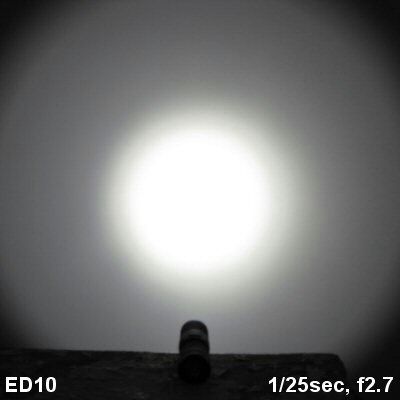
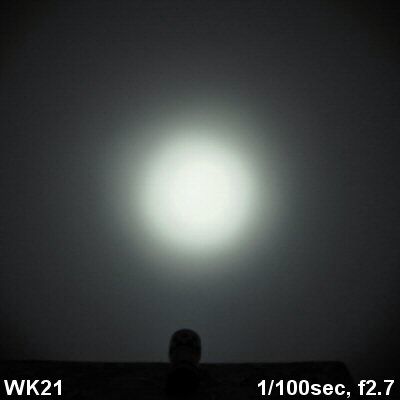
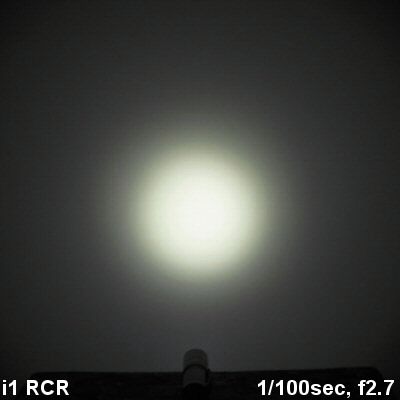
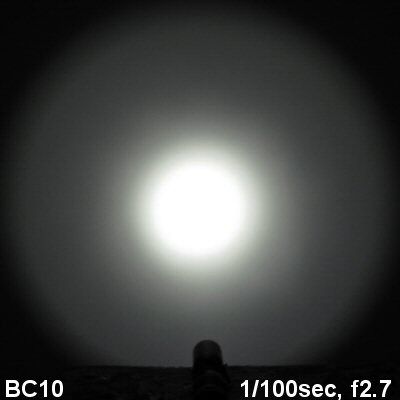
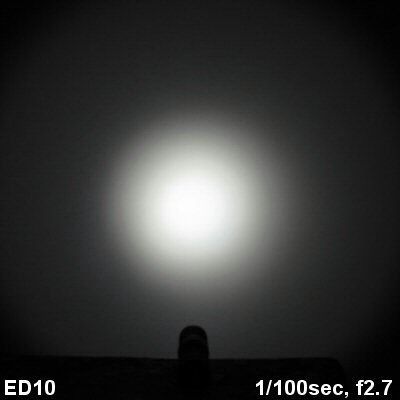
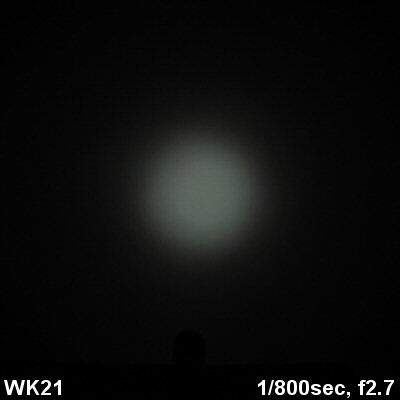
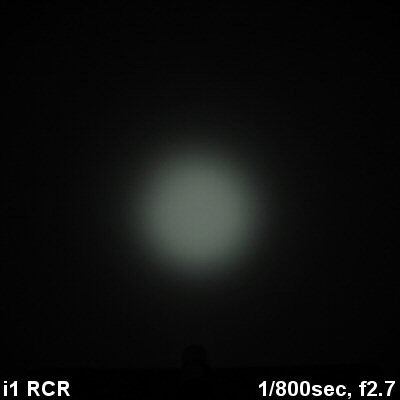
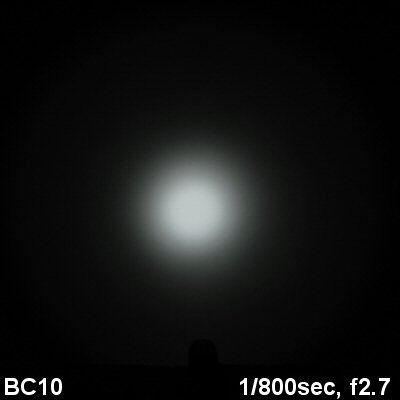
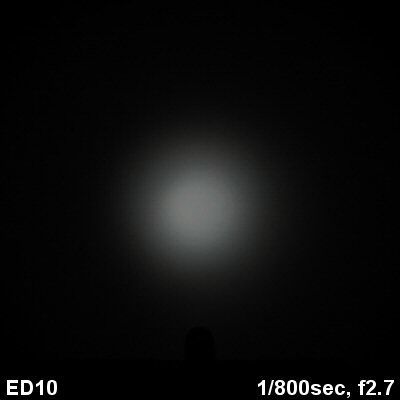
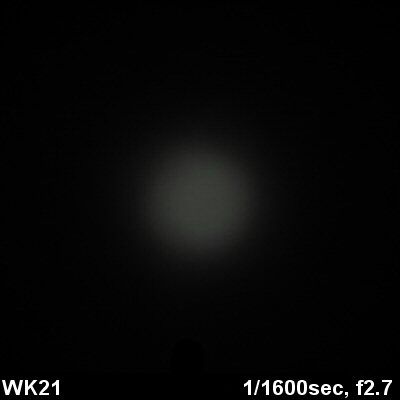
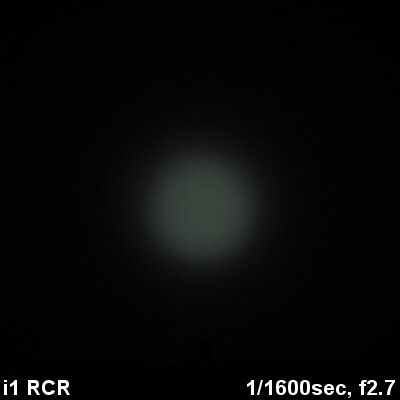
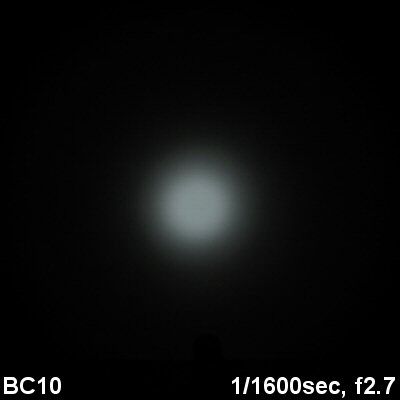
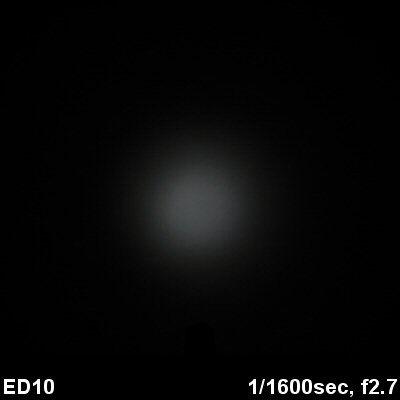
Output is quite reasonable of the class, but it is certainly not overly-driven.
Testing Method:
All my output numbers are relative for my home-made light box setup, a la Quickbeam's flashlightreviews.com method. You can directly compare all my relative output values from different reviews - i.e. an output value of "10" in one graph is the same as "10" in another. All runtimes are done under a cooling fan, except for any extended run Lo/Min modes (i.e. >12 hours) which are done without cooling.
I have recently devised a method for converting my lightbox relative output values (ROV) to estimated Lumens. See my How to convert Selfbuilt's Lighbox values to Lumens thread for more info.
Throw/Output Summary Chart:
Effective November 2010, I have revised my summary tables to match with the current ANSI FL-1 standard for flashlight testing. Please see http://www.sliderule.ca/FL1.htm for a description of the terms used in these tables.
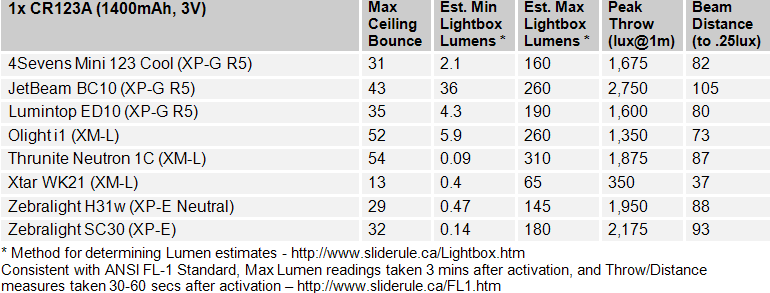
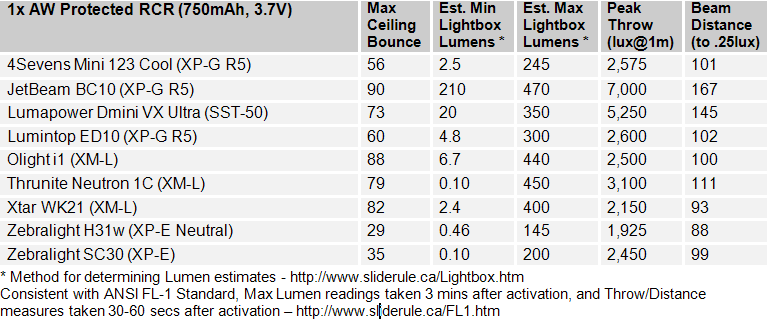
On 1xRCR, the WK21 is close in max output to my other recent XM-L based lights - the Olight i1 and Thrunite 1C. But I would estimate the WK21 as ~400 lumens (rather than the rated 500 lumen spec). Max Throw is actually higher than spec on my sample (2150 lux @1m, or 93m beam distance).
The WK21 is clearly not intended to be run on 1xCR123A, as output levels are much lower on this lower voltage source.
Output/Runtime Comparison:
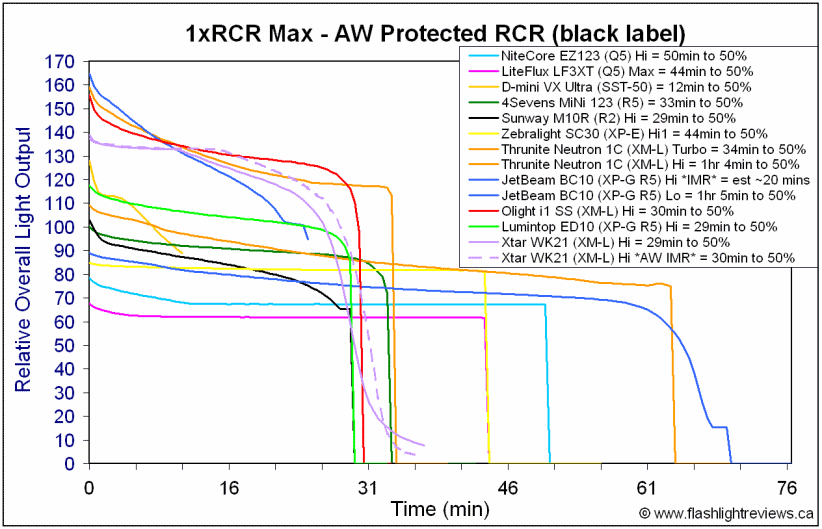
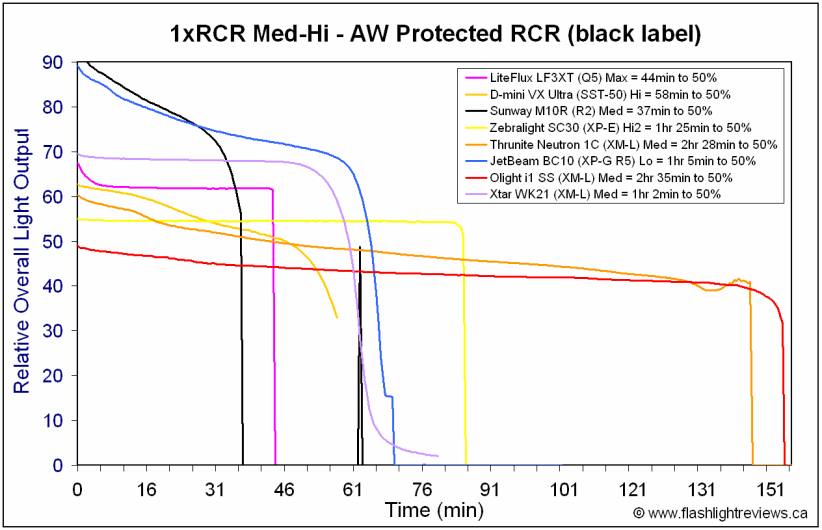
The WK21 is very bright on Max, but not quite as high initially as some of my other recent XM-L-based 1xRCR lights (due to the regulation pattern shown here). Runtimes do match posted specs, however.
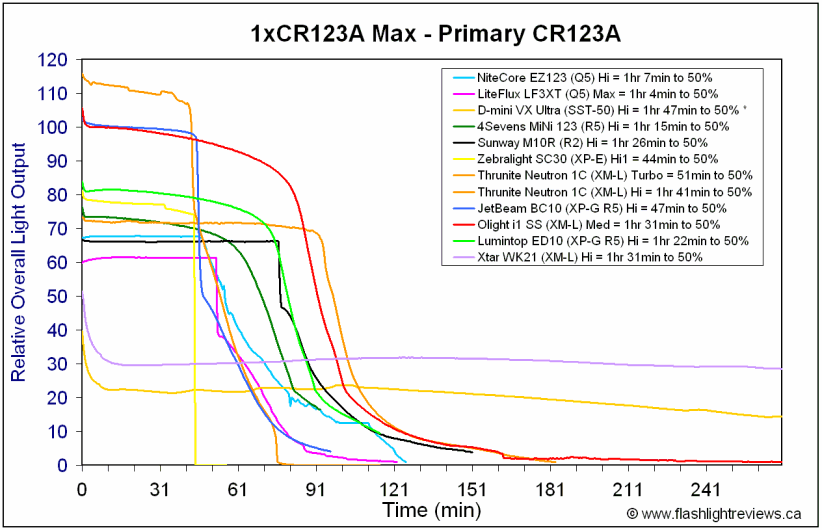
The WK21 is clearly not designed to run on primary 3V 1xCR123A. Output levels are all a lot lower, and the light seems to have a direct-drive-like pattern.
Potential Issues
The number of modes is customizable, but only by soldering contacts between the registers in the head.
I found the number of modes to be inconsistent during switching (i.e. the light sometimes acts like some of the contacts were intermittently connected). Keeping the contact surfaces clean helped, but didn't completely eliminate the problem.
Does not fully support 1xCR123A (i.e. low output and lack of regulation).
Although the head fits securely, there is a lot of play in the screw threads on my sample.
Preliminary Observations
The WK21 has a solid build overall. Light feels quite substantial for the size (the head is particularly well weighted). I would prefer stiffer threads, but otherwise I like the ergonomics and hand feel.
I don't really have a need for the tailcap magnet, but this is an interesting feature. I do like the removable clip and keychain attachment point that allows tailstanding – although I suspect most will find this light too bulky to carry on a keychain.
The light may seem to be a bit of contradiction in some ways – the output is not quite as high on max as some other recent XM-L-based lights on 1xRCR, yet the WK21 is clearly optimized only for use on 1xRCR. :thinking: The explanation for this apparent discrepancy is that the WK21 fully supports 1xRCR (i.e. it is regulated, at least initially). Many lights in this class don't support or recommend 1xRCR on Max, and are direct-drive at extremely high outputs. The WK21 has a sensible regulated max output on 1xRCR.
I would have liked to see 1xCR123A support here (i.e. a wider voltage range). But this isn't the first light I've seen that sacrifices 1xCR123A support for full regulation on RCR. :shrug:
Output/runtime efficiency is certainly reasonable, given the full regulation pattern. Actual runtimes are consistent with published specs, although I find output numbers seem slightly inflated.
The flexibility of altering the number of output modes is appreciated (especially by those of us who don't like blinking modes in the main sequence ). Although I've seen examples where there was a simple contact to sever or join (e.g. Dereelight C2H), this is the first time I've seen this many options in a multi-mode light.
). Although I've seen examples where there was a simple contact to sever or join (e.g. Dereelight C2H), this is the first time I've seen this many options in a multi-mode light.
In summary, the WK21 is a solid light that packs a good punch, although it is really limited to use on 1xRCR. The number of modes (and the options to select them) are fairly novel, but may require a little more work on the part of the user. :wave:
----
WK21 was provided by Xtar for review.


The WK21 is keychain 1xRCR class light from Xtar, featuring a high-output XM-L emitter. Scroll down to see how it performs relative to others in this class.
Manufacturer's Specifications:
- LED: CREE XM-L T6 LED
- ANSI Illumination levels:
- High: 500Lm, 20mins
- Mid: 210Lm, 55mins
- Low : 10Lm, 40hours
- Strobe, SOS modes
- Max Range : 70m
- Max Intensity: 1225cd
- Impact Resistance: 1m
- Water Resistance: IPX-7 ( underwater 0.5m)
- Body Material: Anodized aircraft 6061 aluminium alloy
- Working Voltage: 2.75~4.2V
- Battery: 16340
- Switch: Head rotary switch
- Size: 25.6mm (Head diameter) x 24.0mm (body diameter) x 70.2mm (length)
- Net Weight : 43g (excluding battery)
- Additional Functions: Memory function, Tail disassembles, strong magnet in the tail
- MSRP: ~$38

Packaging is a hard cardboard box with built-in packaging foam. Inside you will find the light, belt clip (attached), keychain ring, extra o-ring, manual and warranty card.


From left to right: CR123A, Xtar WK21, Zebralight SC30, 4Sevens Mini 123, 4Sevens Quark 123, Nitecore PD10, Thrunite Neutron 1C.
All dimensions are given with no batteries installed:
Xtar WK21: Weight: 59.1g, Length: 66.5mm, Width (bezel): 25.8mm
Lumintop ED10: Weight: 21.5g, Length: 70.4mm, Width (bezel): 20.7mm
Olight i1 Stainless Steel: Weight 48.1g, Length: 63.9mm, Width (bezel): 20.4mm
Jetbeam BC10: Weight: 46.6g, Length: 90.3mm, Width (bezel): 23.2mm
Thrunite 1C: Weight: 45.2g, Length: 91.5mm, Width (bezel) 22.0mm



Overall build is fairly sturdy – light feels very solid. There is good weight to the head, making me think heatsinking is decent.
Anodizing is a shiny black, and seems thick, without any nicks or damage on my sample. There is no real knurling on the head or body, but there are some fluted ridges on the head to help with grip. With the removable clip attached, overall grip is certainly decent. Labels are bright white against the black background.
Light has a scalloped bezel ring, letting you know if the light is on when standing on its head. The light can tailstand.
Of interest, there is a strong magnet on the base of the light, allowing you to stick this light to metal surfaces. Of course, that also means that it is likely to attract coins in your pocket, if you leave it on a keychain.
There is a metal spring at the base of the light.
Light works by tightening the head against the body, so screw threads are anodized for lock-out. Threads have more play in them than typical – certainly more than I would like (i.e. very "sloppy", or loose).
User Interface
To activate the light, tighten the head against the body.
The WK21 is a fully customizable light, with anywhere from one to up to five possible modes (arranged in sequence, accessed by a loosen-tighten cycle from On). The five output modes are Lo, Med, Hi, Strobe and SOS (generally in that sequence). But there are 16 possible mode combinations available to choose from.
You set the mode combination through the four pairs of contacts on the inside of the head (note that 2^4 = 16 combinations). By default, all four contacts pairs are disconnected. This gives you the five output modes listed above. You can connect individual paired contacts to give you access to other mode combinations. Normally, you would do this by soldering the contact points between the pairs (but sometimes the old graphite trick with a pencil works to give you temporary connectivity).
There is a table in the manual that explains what each of the mode options are. For example, if you connect the fourth contact only, you get Lo > Hi > Strobe > SOS. If you connect the last three pairs of contacts, you get Hi > Strobe only, and so on and so forth. Please refer to the manual for all the specific pairings.
There is mode memory, and the light remembers the last setting you left it (if you leave it off for at least several seconds).
I've noticed the light can be inconsistent in how it cycles through modes (i.e. it sometimes acts as if some of the contacts have been connected, giving you a reduced number of modes). Keeping all contacts surfaces clean helps, but consistency is still not 100% in my testing.
For a more detailed examination of the build and user interface, please see my video overview: :wave:
Video was recorded in 720p, but YouTube defaults to 360p. Once the video is running, you can click on the 360p icon in the lower right-hand corner, and select the higher 480p to 720p options, or even run full-screen.
PWM/Strobe
Med mode:

Lo mode:

The WK21 uses PWM of 500 Hz frequency. This is high enough to not be issue in actual use for most people, but it is detectable.

Strobe was measured at 10 Hz.
Beamshots:


The WK21 uses a Cool White XM-L emitter, reasonably well-centered in a smooth reflector. Given the small size of the head, I would not expect great throw.
All lights are on AW protected RCR, about ~0.75 meter from a white wall (with the camera ~1.25 meters back from the wall). Automatic white balance on the camera, to minimize tint differences.
















Output is quite reasonable of the class, but it is certainly not overly-driven.
Testing Method:
All my output numbers are relative for my home-made light box setup, a la Quickbeam's flashlightreviews.com method. You can directly compare all my relative output values from different reviews - i.e. an output value of "10" in one graph is the same as "10" in another. All runtimes are done under a cooling fan, except for any extended run Lo/Min modes (i.e. >12 hours) which are done without cooling.
I have recently devised a method for converting my lightbox relative output values (ROV) to estimated Lumens. See my How to convert Selfbuilt's Lighbox values to Lumens thread for more info.
Throw/Output Summary Chart:
Effective November 2010, I have revised my summary tables to match with the current ANSI FL-1 standard for flashlight testing. Please see http://www.sliderule.ca/FL1.htm for a description of the terms used in these tables.


On 1xRCR, the WK21 is close in max output to my other recent XM-L based lights - the Olight i1 and Thrunite 1C. But I would estimate the WK21 as ~400 lumens (rather than the rated 500 lumen spec). Max Throw is actually higher than spec on my sample (2150 lux @1m, or 93m beam distance).
The WK21 is clearly not intended to be run on 1xCR123A, as output levels are much lower on this lower voltage source.
Output/Runtime Comparison:


The WK21 is very bright on Max, but not quite as high initially as some of my other recent XM-L-based 1xRCR lights (due to the regulation pattern shown here). Runtimes do match posted specs, however.

The WK21 is clearly not designed to run on primary 3V 1xCR123A. Output levels are all a lot lower, and the light seems to have a direct-drive-like pattern.
Potential Issues
The number of modes is customizable, but only by soldering contacts between the registers in the head.
I found the number of modes to be inconsistent during switching (i.e. the light sometimes acts like some of the contacts were intermittently connected). Keeping the contact surfaces clean helped, but didn't completely eliminate the problem.
Does not fully support 1xCR123A (i.e. low output and lack of regulation).
Although the head fits securely, there is a lot of play in the screw threads on my sample.
Preliminary Observations
The WK21 has a solid build overall. Light feels quite substantial for the size (the head is particularly well weighted). I would prefer stiffer threads, but otherwise I like the ergonomics and hand feel.
I don't really have a need for the tailcap magnet, but this is an interesting feature. I do like the removable clip and keychain attachment point that allows tailstanding – although I suspect most will find this light too bulky to carry on a keychain.
The light may seem to be a bit of contradiction in some ways – the output is not quite as high on max as some other recent XM-L-based lights on 1xRCR, yet the WK21 is clearly optimized only for use on 1xRCR. :thinking: The explanation for this apparent discrepancy is that the WK21 fully supports 1xRCR (i.e. it is regulated, at least initially). Many lights in this class don't support or recommend 1xRCR on Max, and are direct-drive at extremely high outputs. The WK21 has a sensible regulated max output on 1xRCR.
I would have liked to see 1xCR123A support here (i.e. a wider voltage range). But this isn't the first light I've seen that sacrifices 1xCR123A support for full regulation on RCR. :shrug:
Output/runtime efficiency is certainly reasonable, given the full regulation pattern. Actual runtimes are consistent with published specs, although I find output numbers seem slightly inflated.
The flexibility of altering the number of output modes is appreciated (especially by those of us who don't like blinking modes in the main sequence
In summary, the WK21 is a solid light that packs a good punch, although it is really limited to use on 1xRCR. The number of modes (and the options to select them) are fairly novel, but may require a little more work on the part of the user. :wave:
----
WK21 was provided by Xtar for review.
Last edited:


